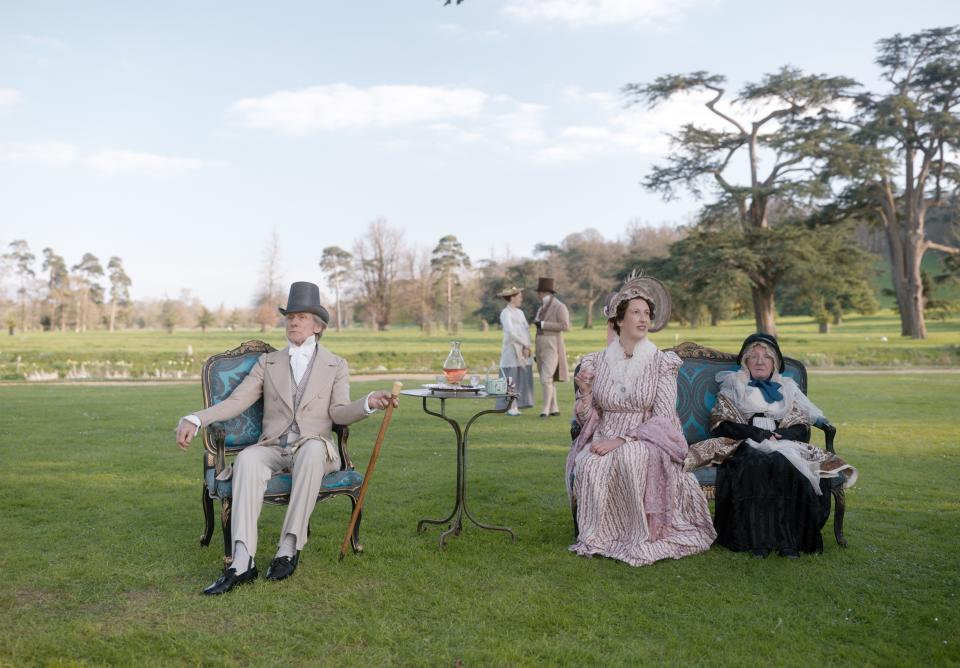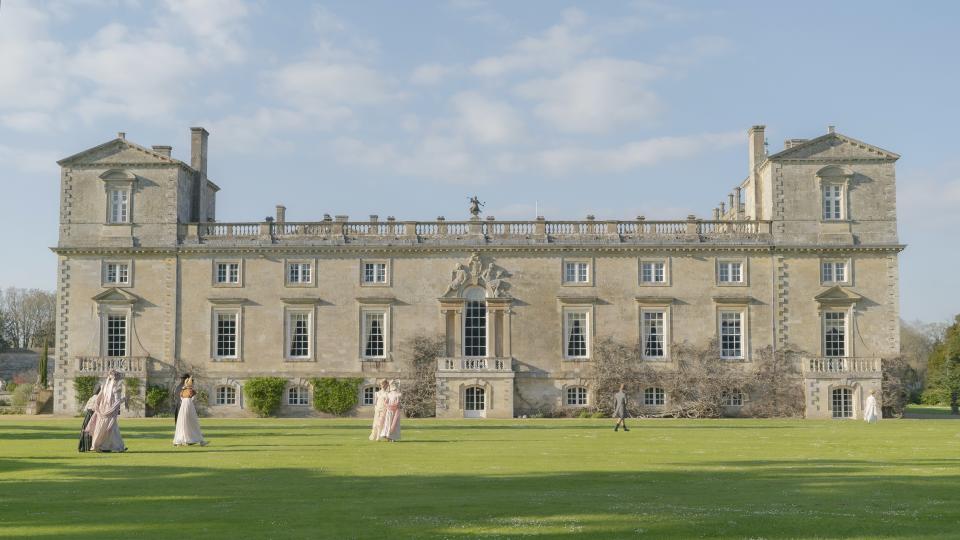Emma Takes Place in a Bright Georgian Dollhouse
When Autumn de Wilde set out to tell the classic Jane Austen story Emma on film, the director explained to her production crew that the misguided heroine at the center of the tale views the people around her as dolls to be played with. Therefore, the task at hand for production designer Kave Quinn, set decorator Stella Fox, and their team was to build Emma (played by Anya Taylor-Joy) a bright and colorful dollhouse.

EMMA.
Their first requirement for this house was that it be one not seen on film before—especially not in any of the many past adaptations of Emma. (There’s the 1996 version starring Gwyneth Paltrow, two BBC adaptations, international versions, and, of course, the 1995 comedy Clueless is loosely based on the story.) The second was that it be accurate to the Georgian period (or early 19th century) in which the story takes place, and the third, that they could splash it with color from top to bottom. “The problem is most houses might be Georgian or earlier on the exterior, but then of course they’ve been done over in Victorian times or changed a lot later on, so it was quite a maze to find the right property,” Quinn tells Architectural Digest. On top of that, homes maintained by the English Heritage organization or the National Trust were not an option because of their strict guidelines.

E M M A .
After scouring the country, a historic estate called Firle Place emerged as the clear winner to play the part of the home Emma shares with her father, Mr. Woodhouse. Built during the 16th century and remodeled during the 18th, the home fit the architectural timeline perfectly. Plus, the owners gave the go-ahead for the team to add all of the bright paint, patterned wallpaper, and drapery they desired.
“I think people often look back at the period and think things were very muted and faded, but that’s just because the costumes from that period are faded now in contemporary times,” notes Fox. “If you look at the ceramics, for example, that survived from the Georgian period, they have very heightened, punchy colors. That was something that Autumn was very keen to show.”

EMMA
Each room in the home, called Hartfield in the story, is more colorful than the next, and while they aren’t monochromatic, they each have a color identity that creates a sort of visual rainbow as Emma flits around, dreaming up her matchmaking machinations. “In Emma’s bedroom, for example, I wanted it to feel like an Italian ice cream. You’ve got corals and oranges and then it is a gradient of those colors, right down to a pinkish ivory color,” says Fox. “You’ve got one color in a lot of different gradients within the same room which provided a real elegance I think.”

EMMA
This Jane Austen–Candy Land aesthetic was achieved by painting walls and antique furniture, putting up custom wallpaper from Adelphi Paper Hangings, and by using lots and lots of fabric. “The fabrics are sourced from all over Europe. A lot of Italian silk and printed silks and hand embroidered pieces,” says Fox. “We took a lot of references from original Robert Adam buildings. They are just very courageous with their drapery choices and their furniture upholstery.” Flowers pulled the whole thing together, and also signified the changing seasons throughout the film. “We referenced Cecil Beaton photographs quite a lot for the floral displays and we worked with a very talented florist to give everything a very elegant, handpicked style, so it felt like they were picked and displayed by Emma.”

Emma
Despite all of the makeup applied to Firle Place to make it look like Emma’s headquarters, two pieces belonging to the real-life owners actually make a cameo in the flick. “In the mint-colored drawing room, we left two Chippendale cabinets because they were so beautiful,” says Quinn. And now that filming has wrapped and (the movie hits select theaters February 21), Fox says most of the traces of Emma’s brightly colored world have been wiped clean. “I think the lady of the house wanted to keep more of it like how we decorated, but I think he maybe put his foot down about some of the vibrant pinks and things,” she says. “It’s gone back to how it is, which I was quite keen about, so that our world of Hartfield would be kept just for our film—completely unique.”
Originally Appeared on Architectural Digest


